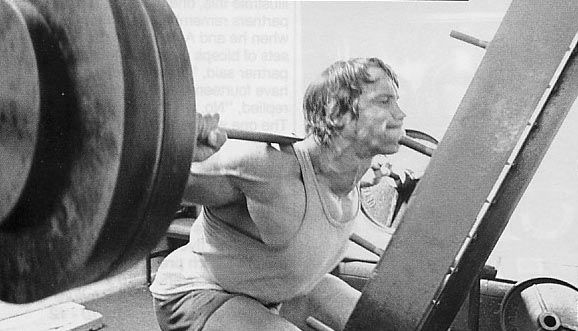For decades, a small contingent of bodybuilders and powerlifters has employed an approach to training called “super-slow training”. What is it? How does it work? What are the advantages and drawbacks? Above all, is it right for me?
Superslow 101
Select 20 exercises to be performed. Two for each major muscle group is a good estimation. Include squats, deadlifts, bench press, chins, curls, and your other standard bodybuilding training staples. Every muscle group should be covered. You will be performing all of these exercises in the same day.
The idea of superslow is that you are able to hit more slow-twitch fibers (normally ignored in weight training) by moving through the movement slower. For exercise #1, start with a standard exercise like the bench press. You will be performing five total reps. Count (or preferably, have a training partner count) the seconds of each lift. The positive, or “lift” section of the exercise will take TEN SECONDS. Move the weight up in a slow, controlled fashion for ten seconds. The negative, or “lowering” of the weight, will take FIVE SECONDS. That is fifteen seconds per rep, for five reps. this means that every set will be 75 second long. Move from the bench press to your next exercise, with 2-4 minutes rest between sets. Perform twenty sets in this fashion.
Advantages
Superslow allows more blood to flow into the region of the muscle being trained. It recruits slow-twitch muscle fibers, which are normally bypassed during standard, faster lifting, which hits those fast-twitch muscle fibers. Powerlifters have found superslow training to add numbers to their lifts. When they return to fast reps, their muscles have newly recruited fibers moving the weight, which often leads to strength gains. Bodybuilders have reported size gains, mainly in the upper body.
Drawbacks
Some trainers find superslow training hard on the ego, as they are using poundage’s about 20% lower than normal. Additionally, some bodybuilders report a drop in leg size if they are unable to “nail” the 2-3 sets they assign to legs. Typically, using higher set ranges (12 to 16 sets), leg size stays constant. Many trainers report a GAIN in upper body size and strength, but a DROP in lower body size and strength.
Jumping In
If superslow training intrigues you, give is a shot! Depending upon your training experience and ability to focus upon the muscle group being trained, you might find it’s just what you’ve been seeking to break a current plateau. You may also find that tossing in a few superslow sets each workout after completing your normal sets is a good compromise, which will allow you to continue the high set volume training you enjoy, along with the benefits of superslow sets.




